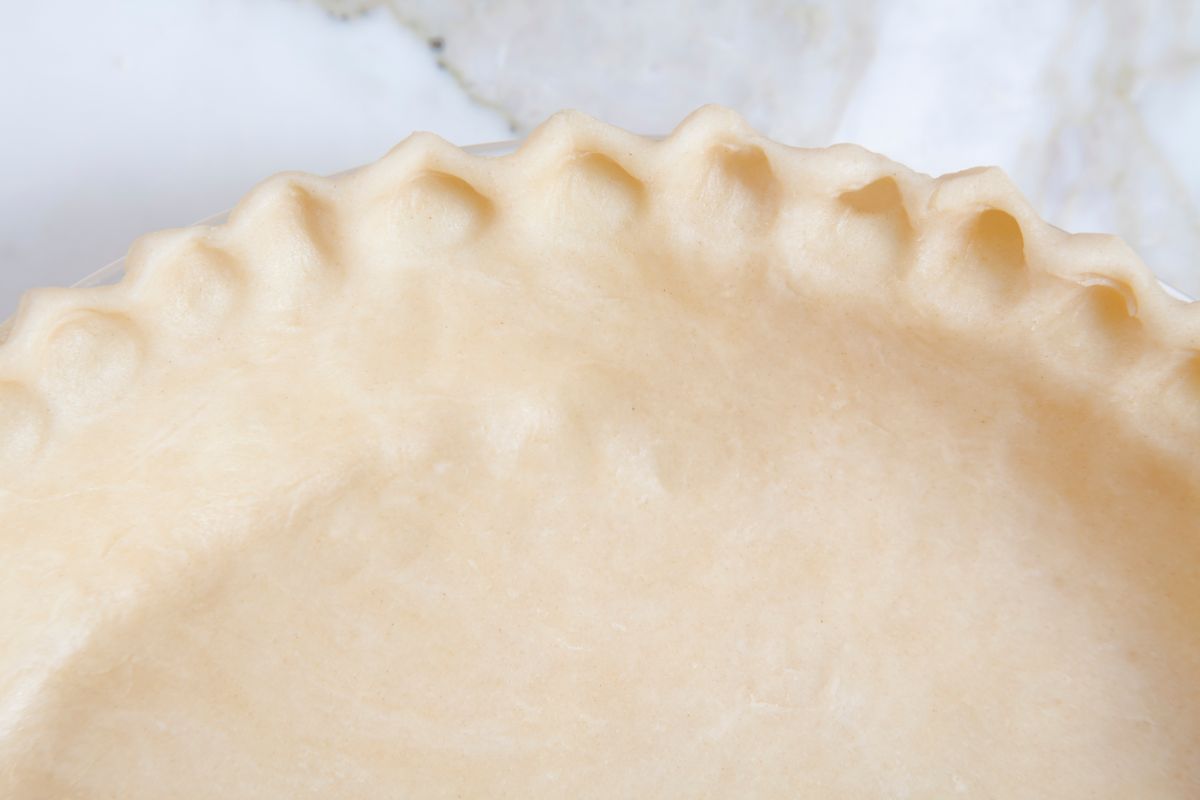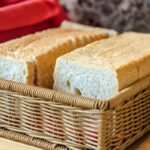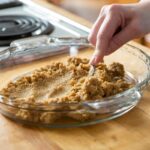Pie crusts are easily one of the hardest foods to sculpt. When it comes to rolling out pie crusts, experience of doing so will help you drastically.

However, in order to master a sturdy technique, you will need to follow the pointers that I have outlined below.
Start Making Dough At The Right Temperature
If your dough becomes too warm or soft, it will stir to your rolling pin as well as the surface that you are working on.
This will force you to add far too much flour to your mixture during the working process.
Conversely, dough that is too cold will crack if you try to force it into a shape.
Thus, you should press your dogs lightly in order to assess its potential for rolling.
You can ascertain whether your dough is at the right rolling temperature by lightly pressing your fingertips Into it.
If your fingers leave an imprint without skunking in too much, then your dough is just right.
Roll Around The Clock
You should place your rolling pin in the center of your dough.
Then, roll towards the 12 o’clock position, easing your touch as you work the edges.
Approaching the edges with ease will prevent the dough from becoming too thin.
Then, you should pick up your rolling pin and return it to the center of your dough before rolling towards the 6 o’clock position.
Repeat this movement towards 3 and 9 o’ clock respectively, always ensuring that you are easing up on any pressure that you are applying when approaching the edge of your dough.
You should also ensure that you pick up your pin after completing your all as opposed to rolling it back towards the center.
Continue to roll your pin around the clock, choosing different ‘times’ accordingly.
Once you have rolled out your pie crust, turn it over and check that it does not stick.
After you have completed each round of the clock, take a bench knife and place it underneath the dough to ensure that it hasn’t stuck to the surface.
You should re-flour your working surface if required.
As you do this, turn your dough approximately a quarter as this will help you to average out the thickness of the dough as you continue to work it.
Continue to work your dough until it has reached the appropriate thickness for your pie crust.
Ease Up On The Flour
Dough that is worked at the perfect temperature will require some additional flour to prevent it from becoming sticky.
However, you should try to avoid using more flour than you require. The more flour that is worked into your dough, the tougher your crust will become.
Try Another Rolling Surface
There are many surfaces that you can efficiently roll dough on asides from the atypical floured countertop.
Other rolling surfaces include silicone rolling mats and pastry cloths. Waxed paper or plastic wrap also works a treat!
Minimal Passes Of The Rolling Pin
Overworking your dough will result in your crust becoming tough.
Thus, the less you have to work your dough during the rolling process, the better your crust will turn out to be.
Why Should I Use Parchment Paper?
Using parchment paper is one of the easiest means of rolling out pie crust.
This applies regardless of whether you are using a homemade mixture or rolling out store-bought pie crusts.
This is because using parchment paper makes it incredibly easy to roll your dough effectively and efficiently in the most simplistic manner.
Parchment paper will also help you to roll out a thinner dough without the need to add any additional flour.
In order to keep your dough in place, you should implement the age-old kitchen trick of using a thin dish dowel, before placing your parchment paper on top of it.
You should ensure that you have purchased parchment paper that is not coated with silicone during this process.
How Do You Roll Dough Without It Becoming Sticky?
If your dough begins to stick during the working process, you should sprinkle flour lightly around the perimeter of your dough.
Then, slide a bench scraper underneath your dough and drag it into the flour.
Repeat this process, placing more flour underneath the dough until it gradually releases from the counter.
How Thick Should My Pie Crust Be?
Your dough should be approximately 1/8 thick and 1” wider than your pie plate.
Stacking two quarters next to your dough is a traditional trick that will correctly measure the best level of thickness for your pie crust.
Can Pastry Be Rolled Straight From The Fridge?
After you have chilled your pastry in the fridge, you should remove it whenever it becomes cold to touch.
The pastry should not be completely hard or it will become cracked when you attempt to roll it out.
If you have chilled your dough for over three hours, you should remove it from your fridge and leave it to warm for 5 minutes prior to rolling it out.
Leaving your dough at room temperature for this period of time will enable it to soften slightly prior to rolling.
Why Do You Put Vinegar In Pie Crust?
The main reason for putting vinegar in pie crust is due to its acidic quality.
Using vinegar prevents gluten from forming, ensuring that the pie crust remains easier to handle and does not become shrunken during the baking process.
Conclusion
To conclude, this article has outlined the most efficient ways to roll out a pie crust.
You should always ensure that you are rolling out a pie crust at the correct temperature to prevent it from either sticking to the surface or becoming cracked.
I hope that you have found this article to be insightful and informative. Thank you for reading.
- How To Reheat A Cheesesteak - November 5, 2023
- What Are Three Must Have Kitchen Knives? - September 22, 2023
- How To Protect Edges Of Pie Crust - June 15, 2023








